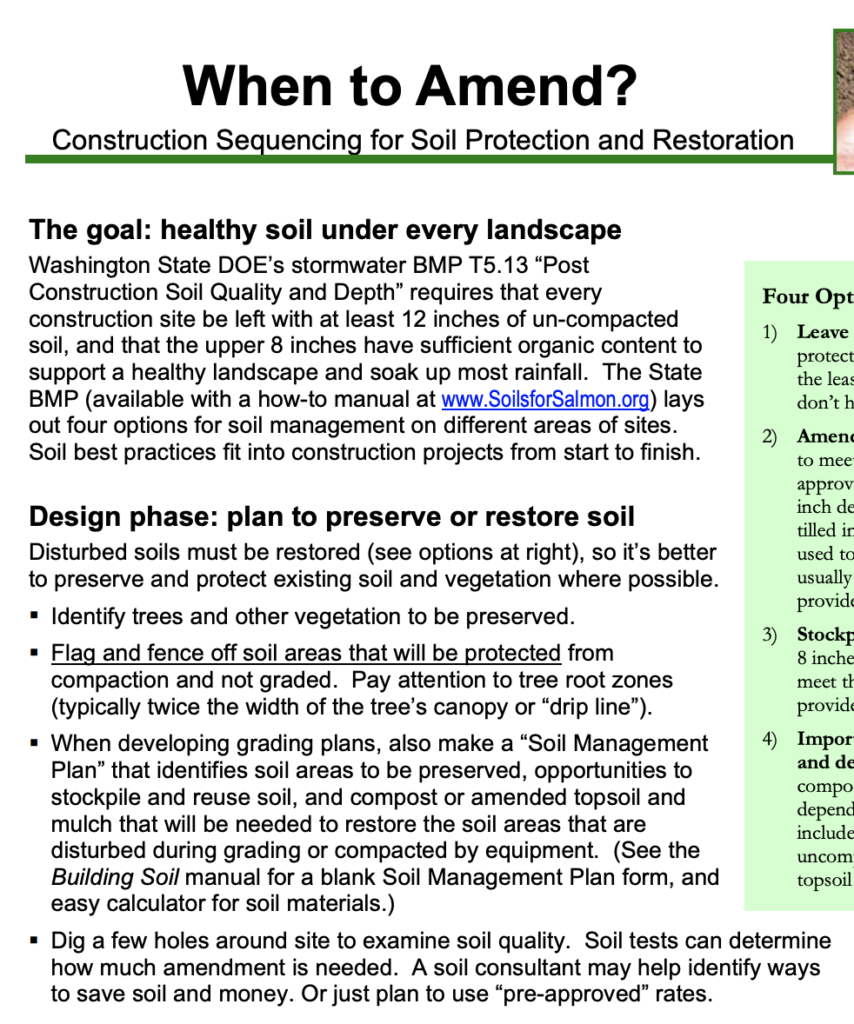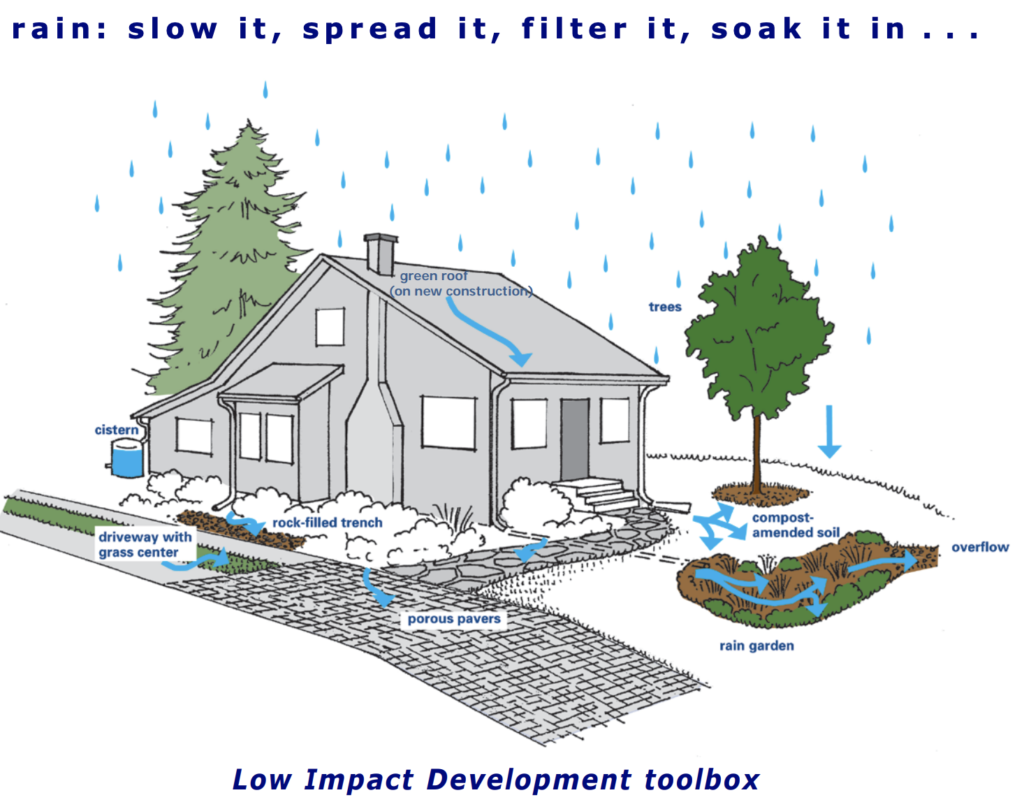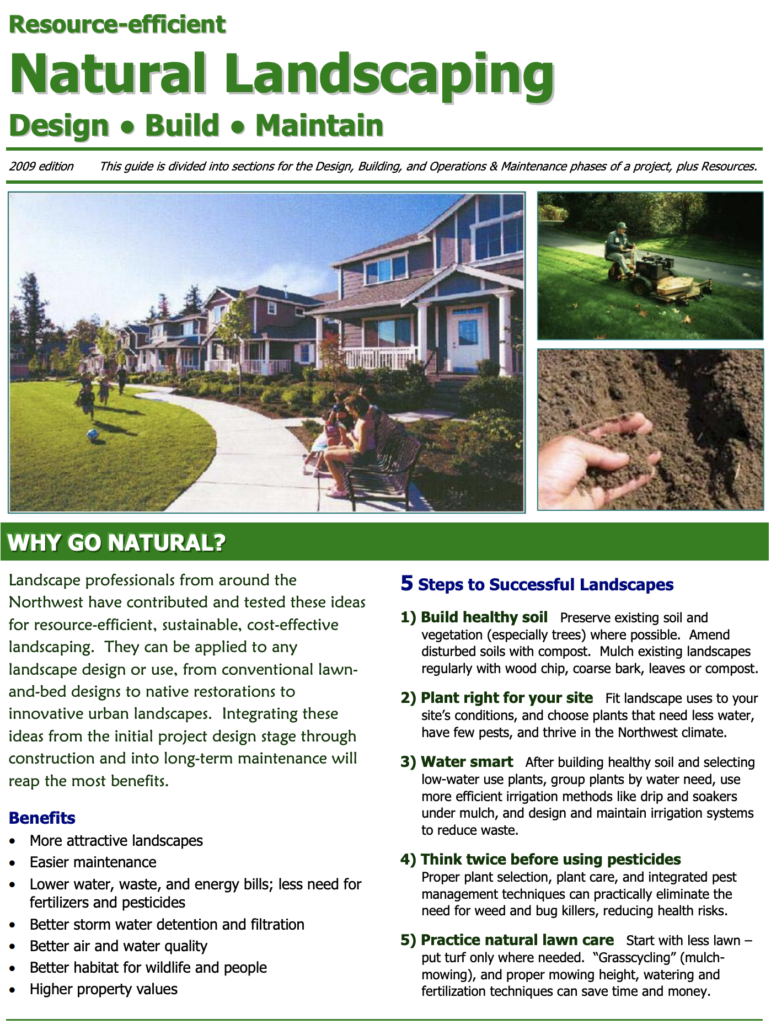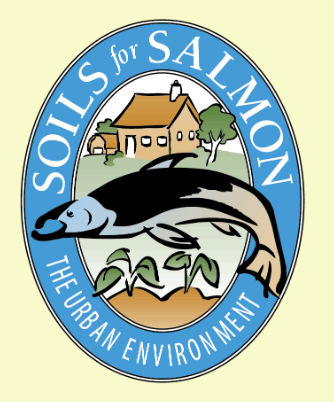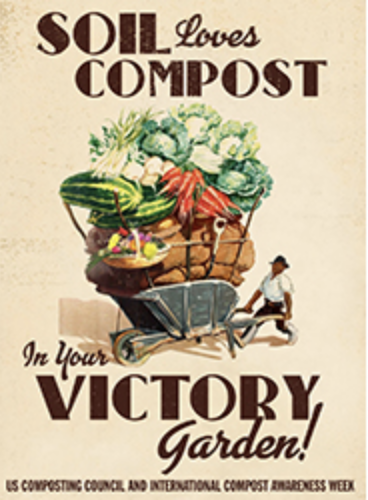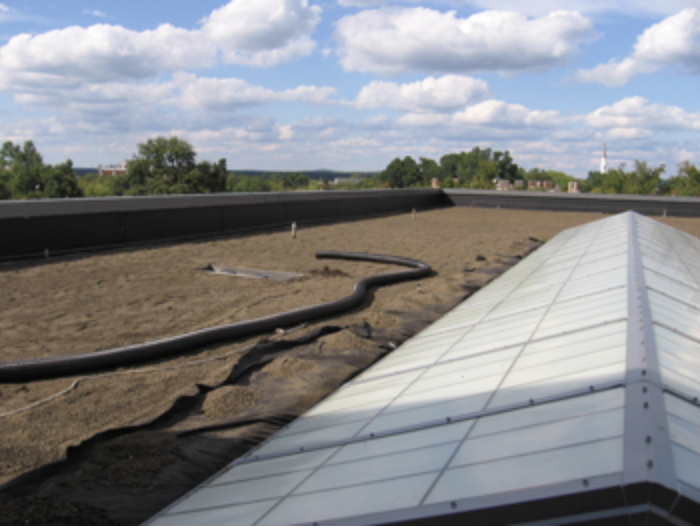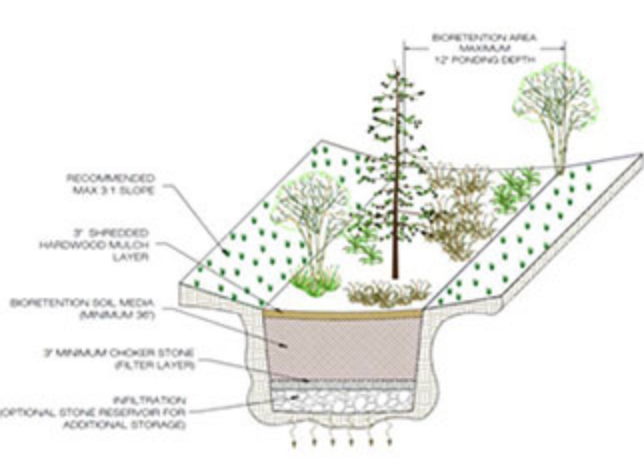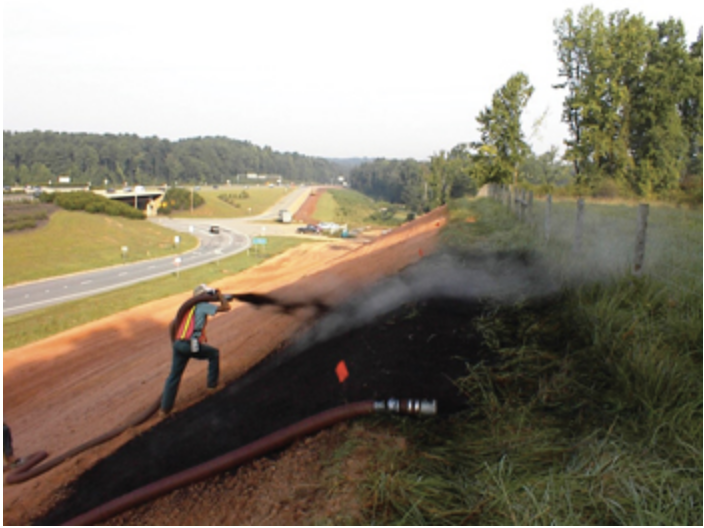Posts by Melinda Hamilton
When to Amend?
The goal: healthy soil under every landscape Washington State DOE’s stormwater BMP T5.13 “Post Construction Soil Quality and Depth” requires that every construction site be left with at least 12 inches of un-compacted soil, and that the upper 8 inches have sufficient organic content to support a healthy landscape and soak up most rainfall. 5…
Read MoreManaging Stormwater Onsite
What’s the Problem? Rain falling on our roofs, roadways, and compacted soil runs off fast down ditches and pipes. This “storm water” can back up and flood homes, cause sewer overflows, and erode hillsides and stream banks. Stormwater also carries dirt, oil and metals from cars, landscape pesticides and fertilizers into Washington’s salmon spawning streams,…
Read MoreNatural Landscaping Guide
Why Go Natural? Landscape professionals from around the Northwest have contributed and tested these ideas for resource-efficient, sustainable, cost-effective landscaping. They can be applied to any landscape design or use, from conventional lawnand-bed designs to native restorations to innovative urban landscapes. Integrating these ideas from the initial project design stage through construction and into long-term…
Read MoreSoils for Salmon: Resources
Soils for Salmon: Building Soil
Why Build Healthy Soil? Healthy soil protects our waterways for salmon, orcas, and people. Soil performs valuable functions: nourishing plants, absorbing, filtering and cleaning stormwater runoff. These functions are often degraded during development when vegetation and soil are removed or compacted. Restoring healthy soil is essential to protecting our waterways, salmon, orcas and other wildlife,…
Read MoreUsing STA Certified Compost – Directions for Use and Specifications: Victory Garden Uses
Compost in Victory Gardens Have you joined the rejuvenated Victory Garden movement? Millions of Americans who are sheltering in place due to the current COVID-19 restrictions have turned to their gardens for exercise, family activity, health produce and fun! Where did the term “Victory Gardens” Come From? During World War II, labor shortages stretched the…
Read MoreUsing STA Certified Compost – Directions for Use and Specifications: LEED Credits for Specific Uses
LEED Credits – Methods & Amounts for Specific Uses LEED – Leadership in Energy and Environmental Design – is an internationally recognized green building program. It provides building owners and operators with a framework for identifying and implementing practical and measurable green building design, construction, operations and maintenance solutions. LEED – Compost Specifications Compost has…
Read MoreUsing STA Certified Compost – Directions for Use and Specifications: Bioretention Specifications
Bioretention Specifications Bioretention areas filter water gathered through surface runoff. These areas can feature beautiful plant habitats while filtering pollutants, and be scaled to a variety of storm event sizes.
Read MoreUsing STA Certified Compost – Directions for Use and Specifications: State Department of Transportation (DOT) Specifications
Specifying STA Certified Compost DOTs across the country have shown their confidence in the efficacy of the Seal of Testing Assurance program’s STA Certified Compost products by requiring its use on projects under their jurisdiction. The US Composting Council’s Seal of Testing Assurance Program “STA” is a compost testing, labeling and information disclosure program designed to give…
Read MoreUsing STA Certified Compost – Directions for Use and Specifications : Erosion Control Specifications
Compost – Erosion Control Uses Compost is a great tool to prevent erosion due to its ability to slow down and infiltrate water into the soil. This benefit is especially true when it is paired with one of the erosion control methods below. These methods improve water quality by reducing the amount of stormwater that…
Read More
